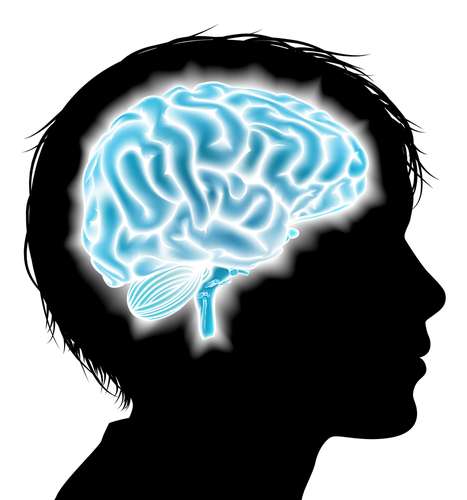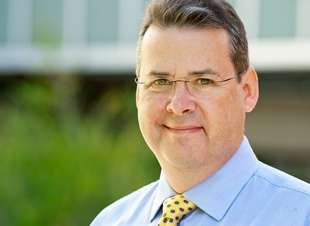A Look at Landmark NIH Study on Substance Use and the Developing Brain
 The National Institutes of Health has awarded 13 grants for a landmark, multi-site study that will follow 10,000 children over 10 years to observe how substance use affects the brain, and the findings could help guide important public policy decisions.
The National Institutes of Health has awarded 13 grants for a landmark, multi-site study that will follow 10,000 children over 10 years to observe how substance use affects the brain, and the findings could help guide important public policy decisions.
Bioscience Technology caught up with Ian Colrain, Ph.D., executive director for Brain Sciences at SRI International, to learn more about the objectives and research methods involved in the Adolescent Brain Cognitive Development (ABCD) study, which will examine brain structure, and cognitive and social abilities. Colrain, who is also a professor of psychology at the University of Melbourne in Australia, will be the principal investigator on the study at SRI’s ABCD site. Colrain is an internationally recognized expert in research on sleep, the brain, and alcoholism.
The longitudinal study will track adolescents beginning at age 9, to 10, before they participate in any substance use, and will follow their use of alcohol, marijuana, nicotine and all street drugs, over a 10 year period.
A major motivation for the study, Colrain told Bioscience Technology, is that the brain changes a lot during puberty. During adolescence the brain shrinks, in part to become more efficient, for myelin to be more effectively laid down around axons, and to facilitate good transport between neurons. “So the question is, if you start drinking, or smoking cigarettes or marijuana, or using other street drugs during the time when the brain is losing plasticity and consolidating in its adult form – what does that do?”
Read More: BRAIN Initiative Doles Out Second Round of Funding
The new ABCD study hopes to find out, on a large, detailed scale. “By starting so early and being able to use every subject as their own control, we can see how drug and alcohol use will change the developmental trajectory,” Colrain said. He explained that there will be some kids who abstain altogether from using substances, and for those that do partake, there will be varying patterns of use. For example, some may try a joint occasionally, while others become regular marijuana users. Some participants may drink a lot every day, while others binge once a month. Kids who stay clean will provide a basis for the normal developmental trajectory.
 “The ABCD Study is an important opportunity to closely examine, in humans, the hypothesized link between adolescent alcohol abuse and long-term harmful effects on brain development and function,” said George Koob, Ph.D., director of NIH’s National Institute on Alcohol Abuse and Alcoholism (NIAAA). “Recent human studies have revealed an acceleration in the typical decline in volume of neocortical areas and small increases in white matter volume in adolescents who transitioned to heavy drinking compared to those who did not using magnetic resonance imaging.”
“The ABCD Study is an important opportunity to closely examine, in humans, the hypothesized link between adolescent alcohol abuse and long-term harmful effects on brain development and function,” said George Koob, Ph.D., director of NIH’s National Institute on Alcohol Abuse and Alcoholism (NIAAA). “Recent human studies have revealed an acceleration in the typical decline in volume of neocortical areas and small increases in white matter volume in adolescents who transitioned to heavy drinking compared to those who did not using magnetic resonance imaging.”
To track the affect substance use has on children and their health, the participating institutes, including Cornell University, University of Pittsburg, and University of California Los Angeles, each implement the same data collection methods.
“We’re looking at a number of very innovative measures of brain structure and brain function in terms of MRI measures, we’re also looking at a very detailed battery of neurocognitive assessment,” Colrain told Bioscience Technology. In addition the study will look at functional behaviors, such as how kids are doing in school, what their health is like and what their social interactions are like.
“Hopefully we can get a very good picture of what happens to kids who start putting things into their system that we know affect the brain.”
A representative population
An important component of a study like this is how representative the sample is of the general population. Colrain said there are “remarkably few exclusion criteria.” The institutes will be recruiting through community sources and schools, with help from an organization that has expertise in recruitment and stratifying samples. The study will enroll anyone within the age range that is basically healthy, neurologically typical and not using drugs or alcohol. If someone has braces that might exclude them because of challenges with metal and MRI scanners.
“We want to try to get as close as possible to a nationally representative sample of kids,” Colrain said, noting there might be a slight bias toward an urban sample because of the location of data collection sites. “But as far as we can, we want to match the socioeconomic, and racial and ethnic diversity that would be representative of the whole country.”
The number of participants is also dispersed across the country among the numerous data collection site to help with representativeness. SRI will be looking at about 550 children.
A consortium of experts
The study was initiated by the collaborative Research on Addiction at NIH (CRAN), which is comprised of the National Institute on Alcohol Abuse and Alcoholism (NIAAA), the National Institute on Drug Abuse (NIDA) and the National Cancer Institute.
Eleven of the 13 grants go to research project sites, including SRI, each of which have multiple data collection sites. One grant is funding a coordinating center, which will be headed by Terry Jernigan, Ph.D., and Sandra Brown, Ph.D., at the University of California San Diego, who will be responsible for the overall administration and coordination of the project. Jernigan has a lot of experience in large, childhood neuroimaging studies such as Pediatric Imaging, Neurocognition, and Genetics, and Brown, who is vice chancellor of research at UCSD, is the principal investigator for the administrative core for the National Consortium on Alcohol and Neurodevelopment in Adolescence, another multisite developmental study that is focused on alcohol.
“These two scientists are incredibly capable and both bring a depth and breadth of experience in managing consortium studies and have large scale neuroimaging and neurocognitive assessment studies, as well as a history of looking at alcohol and substance abuse,” Colrain said.
All of the data from the various sites will be immediately pipelined down to the data analysis and informatics center, run by Anders Dale, Ph.D., at UC San Diego. Dale worked with Jernigan overseeing data analysis for PING and is at the forefront internationally of neuroimaging analysis. SRI’s image analysis group will also be part of the data analysis team.
The array of experts will hopefully allow the large study to move forward smoothly.
“We’re able to leverage a lot of experience in neuroimaging analysis and how you bring together data from different sites, different types of scanners and so forth,” Colrain said.
Public policy perspective
Potential to guide public policy is the main reason Colrain thinks that the ABCD study is important, from questions about recreational use of marijuana, to what time schools should start for teens.
For example, there are decades of research that help guide policy as to the legal blood alcohol limit for a person to drive a car. But, “that data doesn’t exist for marijuana, and there’s no good roadside test for whether or not someone is impaired or has been using.”
As the push to legalize marijuana becomes stronger, results from the study could help lawmakers with tough decisions. “If we’ve got clear evidence showing that kids use marijuana and it does or doesn’t affect their brain in devastating and permanent ways, that should inform public policy,” Colrain said.
A sleep researcher at heart, Colrain looks forward to being able to find if there is a causal link between poor sleep habits and substance use development. SRI will be helping to coordinate another piece of the study focused on sleep. Poor sleep, short sleep and delayed sleep are all thought to be risk factors for becoming an alcohol or drug user in adolescence, according to Colrain, so the study will be looking to see if that’s true, as well as if there’s some causality going the other way. “That is, if kids who start using drugs end up with different sleep patterns than the ones who don’t.”
Researchers will monitor the kids’ sleep habits using some form of wearable activity monitor that will give them a 2-3 week snapshot, once every one or two years. In addition, researchers will ask questions about what time they go to bed, when they get up, and how sleepy they feel.
“This will be the first time that such a large study has been able to track sleep and sleep behavior over such a long period of time and specifically be able to see its role in alcohol and substance use,” Colrain told Bioscience Technology. “So I’m really excited about that.”
If the study does show there is a link between sleep and substance use, it could be a push that parents and teachers need to make informed decisions. “Good solid data, from a large study, a longitudinal study like this, would be very hard to ignore and hopefully will lead to more of an emphasis on finding better ways to help kids treat sleep problems when they have them.”
Colrain is also excited “that this is a cross-institute initiative from the NIH, NIDA, NIAAA, and other institutes involved working together, identifying a cross-cutting problem and each putting dollars in.”
Speaking of the consortium, Colrain said: “It’s an incredibly powerful team and I think we should really come up with something very exciting, and novel findings which will help guide public policy moving forward.”





